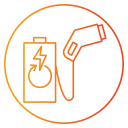Charge Smarter: Electric Vehicle Charging Tips and Best Practices
Chosen theme: Electric Vehicle Charging Tips and Best Practices. Welcome to a friendly hub where we turn everyday charging into confident routines, backed by clear explanations, real-world stories, and actionable wisdom. If these insights help, subscribe and share your charging habits—your experiences can spark better journeys for everyone.

Battery Basics: State of Charge, Speed, and Health
Most lithium‑ion packs are happiest between roughly 20–80% state of charge. This sweet spot reduces cell stress, keeps charging speeds higher for longer, and fits naturally with regular overnight top‑ups. Try setting a daily limit and only charging higher for trips. What range works best for your routine? Tell us in the comments.
Battery Basics: State of Charge, Speed, and Health
Fast chargers deliver impressive power at lower states of charge, then deliberately slow as you approach higher percentages to protect the battery. That taper is normal and healthy. Plan to unplug earlier, drive, and recharge later rather than waiting for the final slow percent. Do you target a specific stop‑charging point? Share your strategy.




Home Charging Setup and Safety Best Practices
A properly installed, dedicated circuit matched to your charger and vehicle ensures safe, consistent power. Follow local electrical codes, size wiring appropriately, and avoid extension cords entirely. Many homes use a 240‑volt Level 2 charger with current limited to 80% of circuit rating for continuous loads. Consult a licensed electrician, then share your setup details.
Home Charging Setup and Safety Best Practices
Use your vehicle or charger’s schedule to charge during off‑peak hours, reduce demand charges, and balance other household loads. Smart features can pause for appliances, then resume automatically. Some utilities even reward flexible charging. What time slots save you the most money? Post your routine so others can optimize theirs too.
DC Fast vs Level 2: Choosing the Right Tool
DC fast charging shines on road trips, tight schedules, or when a quick top‑up opens your day. To preserve longevity, many drivers use it strategically: arrive low, charge only to what’s needed, then go. How do you balance speed and care? Share your fast‑charging rules of thumb.
DC Fast vs Level 2: Choosing the Right Tool
Level 2 charging is the quiet hero: slower, gentler, and usually cheaper than frequent fast sessions. It fits a nightly rhythm, starting while you relax and finishing before breakfast. That routine builds range confidence. If Level 2 changed your mornings, tell us how—and subscribe for more home charging ideas.


String together charging stops that match your route, terrain, and weather. Shorter, well‑timed sessions often beat a single, long wait. Aim for comfortable breaks every 100–150 miles, depending on your car. Which planner or app has guided your best trip? Recommend it to the community.
Trip Planning with Charging Networks and Apps
Time-of-Use and Off-Peak Magic
Utilities often discount electricity at night. Scheduling to those off‑peak windows can cut costs dramatically without changing your driving. Some chargers even track rates and choose the cheapest hours automatically. What’s your utility’s best deal, and how much have you saved? Share numbers to inspire newcomers.
Rebates and Tax Credits
Many regions offer incentives for home chargers, wiring upgrades, or smart charging programs. Check your utility, city, and state or province websites for up‑to‑date offers, then apply before funds run out. Found a hidden gem incentive? Drop a link and help the community benefit.
Driving on Sunshine
Pairing solar with EV charging turns daytime electrons into miles. Midday charging can soak up surplus generation, while batteries and smart controllers smooth usage. Even without solar, aligning with cleaner grid hours cuts emissions. Considering this setup? Subscribe for deep dives and tell us what questions you want answered.
